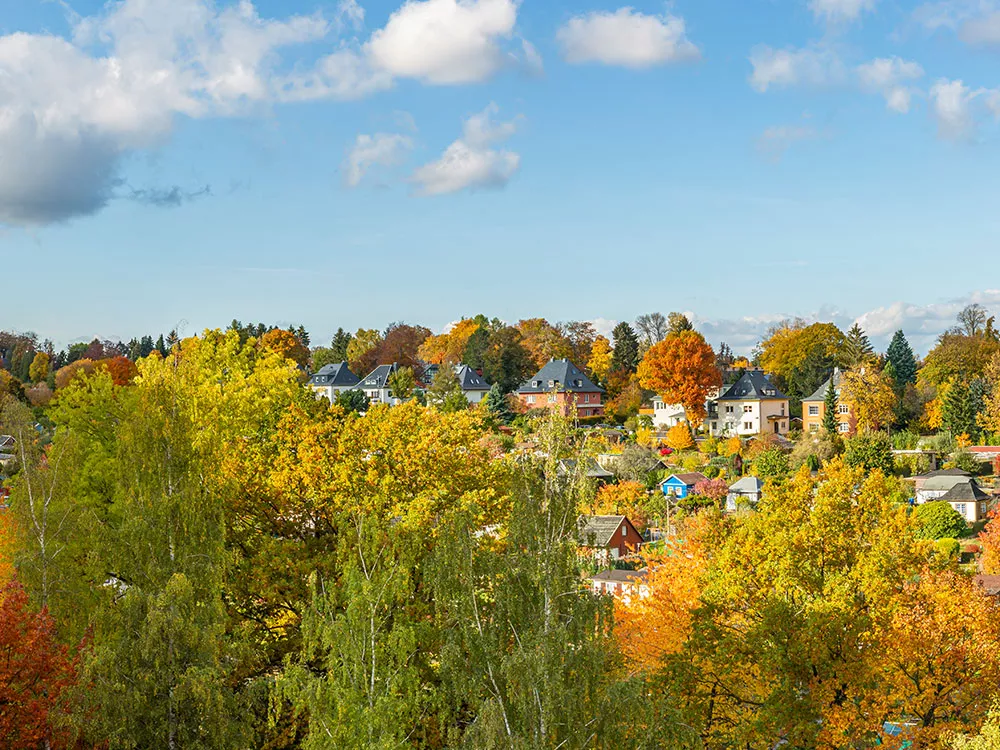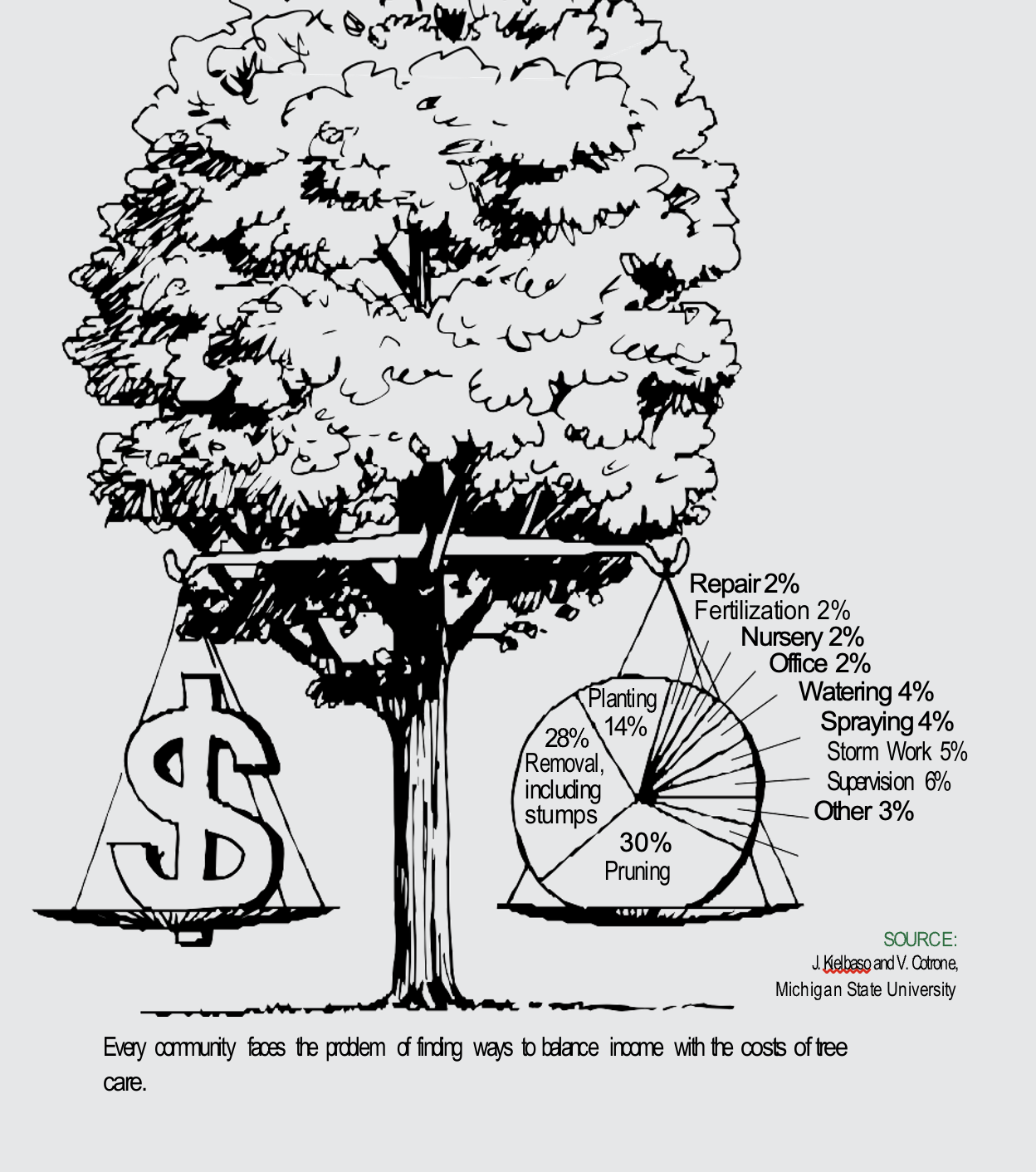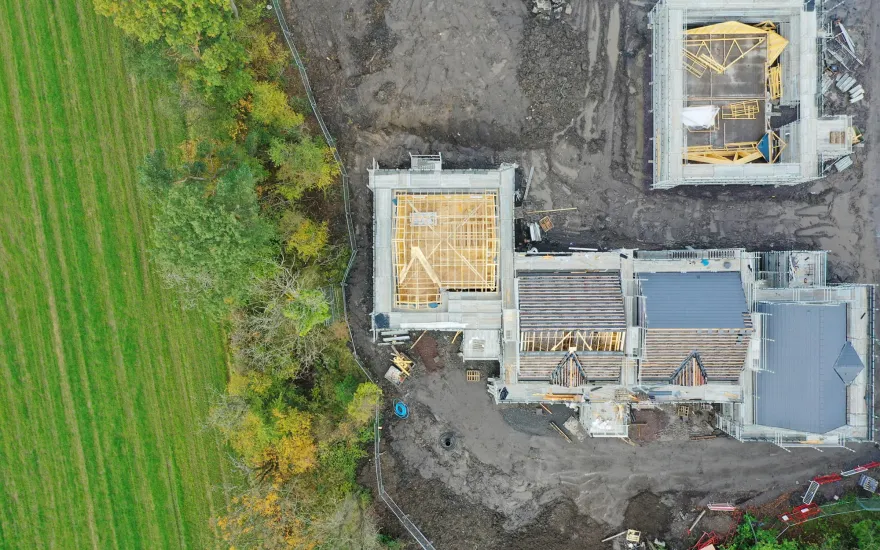Now live: The 2025 Canopy Report. Learn how Americans see trees. GET THE REPORT
Bulletin
How to Fund Community Forestry
Community forestry programs require more than enthusiasm and dedication. They require technical skills, modern equipment, time, and materials — not the least of which is planting stock. All bear a cost. But throughout America, communities are finding ways to pay. Cost, or lack of money, should never be considered an impassable barrier to more trees and better care.

It has been said with eloquence, with statistics, and in words as plain as, “There’s no free lunch.”
Any way you look at it, there is no escaping the fact that all good things have a cost. Trees are no exception. If we want the benefits and the contributions that trees make in our communities, we must find ways to pay the price. It has been estimated that municipalities with forestry programs spend between $8 and $11 per tree each year. The graph on this page, developed by J. James Kielbaso and Vincent Cotrone of Michigan State University, shows the array of expenditures necessary to protect a community’s green assets. The figures are for public trees only, including those on streets (61%) and in parks (26%), cemeteries (2%), city-owned nurseries (2%), and other public property (9%).
Kielbaso and Cotrone also estimated the total value of the nation’s street trees at some $30 billion. Add to that the economic advantages of energy savings, pollution control, enhanced shopping areas, and higher property values, and it clearly illustrates the need for investing in tree care. On top of that, we must plant more trees as cities expand and older trees die. In recent years, the U.S. Forest Service has documented the economic value of trees and calculated cost-benefit ratios for their planting and maintenance. For example, a study of the urban forest in Modesto, California, showed that for each dollar invested in the community’s trees, $1.89 in benefits were returned to residents. To a greater or lesser degree, this favorable ratio has been found in cities throughout the country.
Regardless of how good the investment is in planting and caring for trees, it does cost money. Funds for these activities have never been overly abundant, but the situation has grown worse since the economic recession that began in 2008. Funding community forestry takes determination, public support, imagination, and hard work. Some suggestions for assistance are offered in the pages that follow.

In This Bulletin
Here’s what’s inside:
- Federal Assistance for Urban Trees – availability of federal dollars for community forestry
- 10 Steps to Successful Grant Proposals – guidance for writing a good proposal
- Local Funding: The Essential Foundation – options for creating funding opportunities locally
